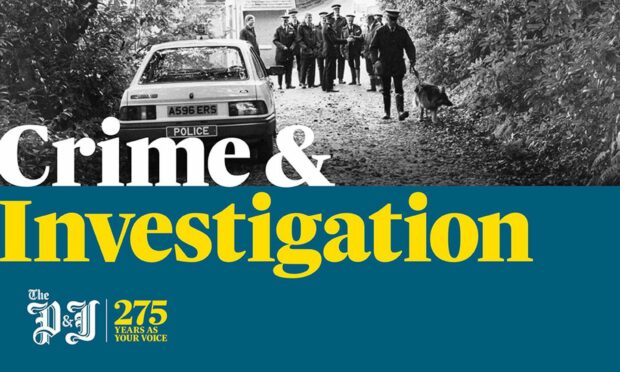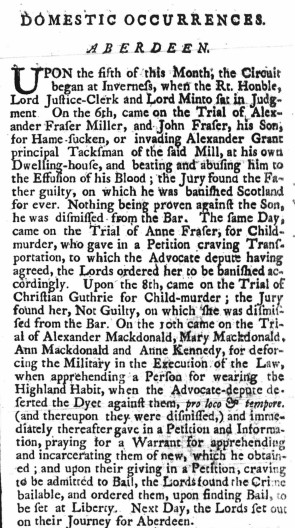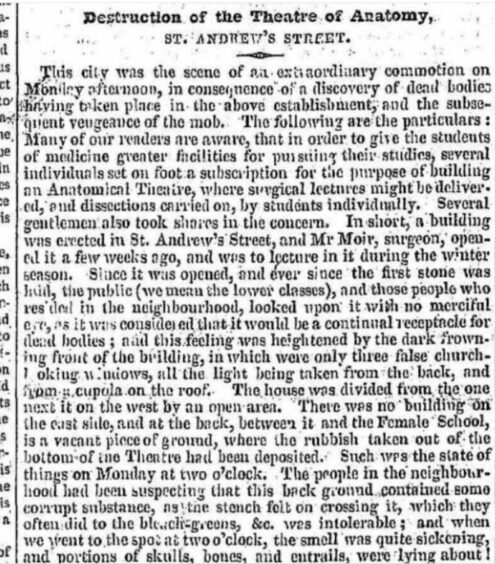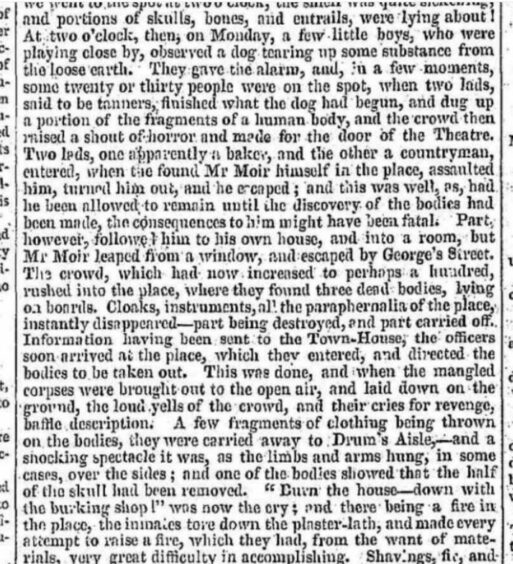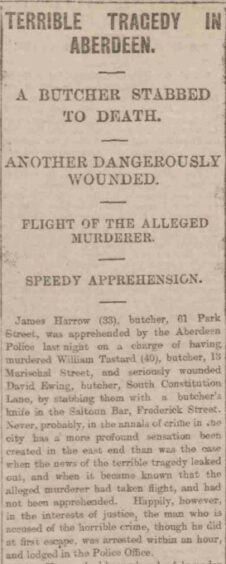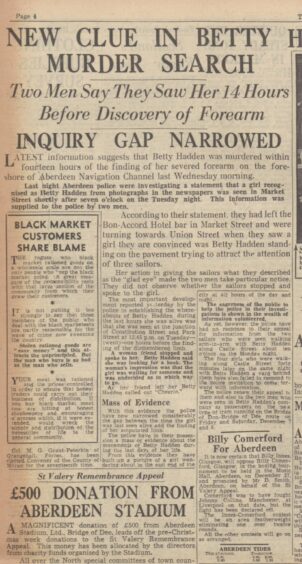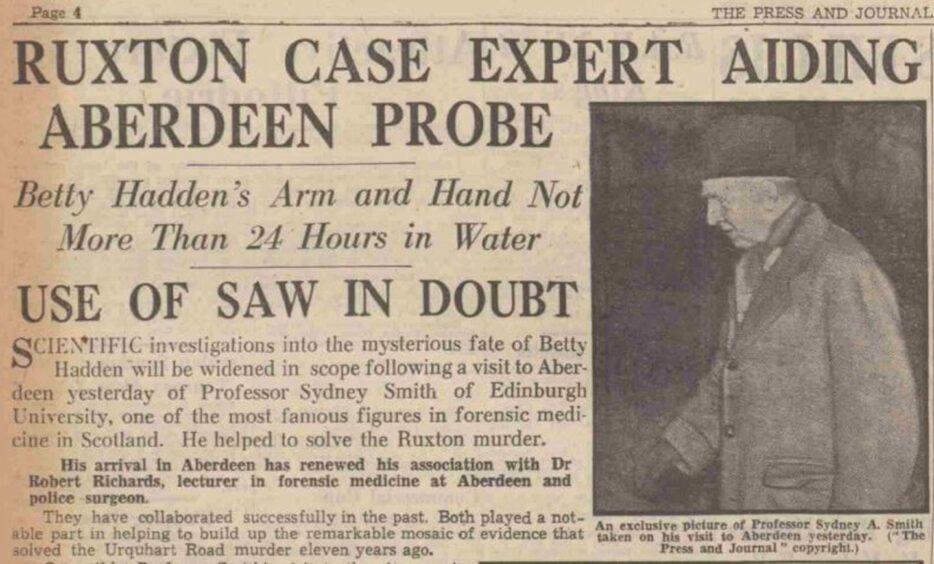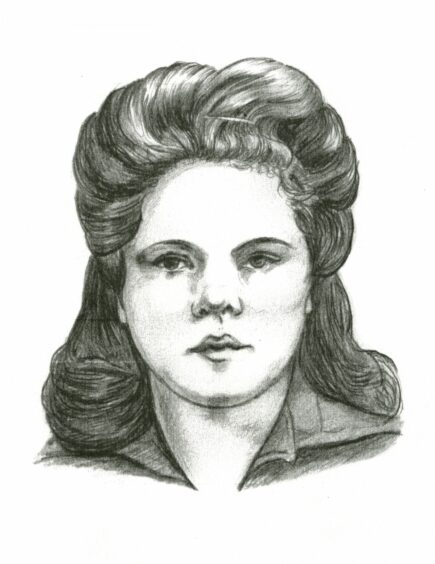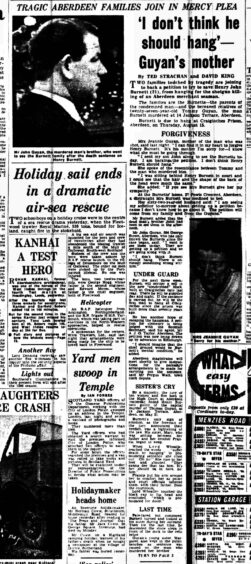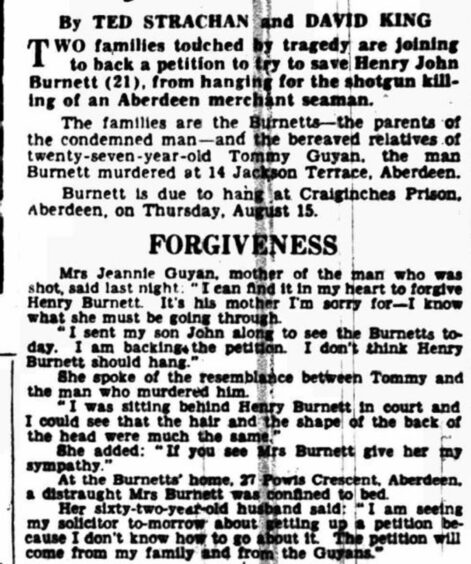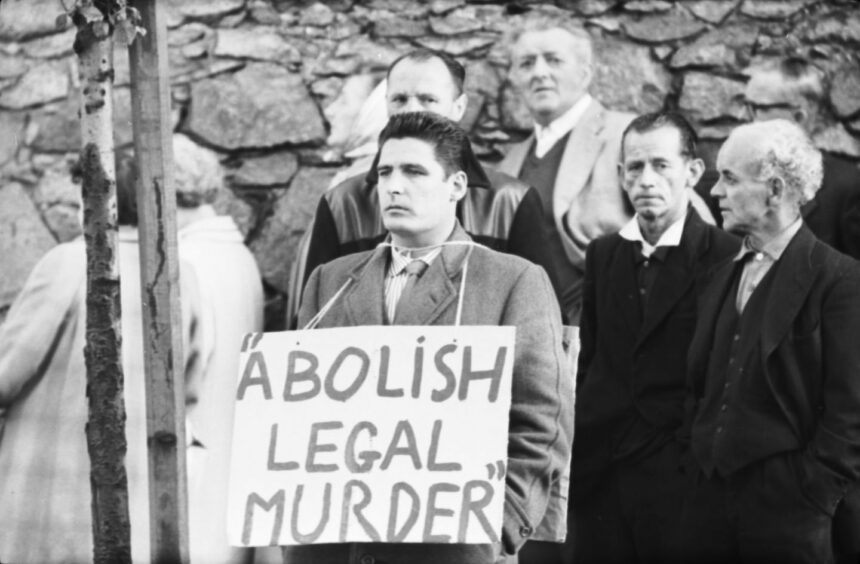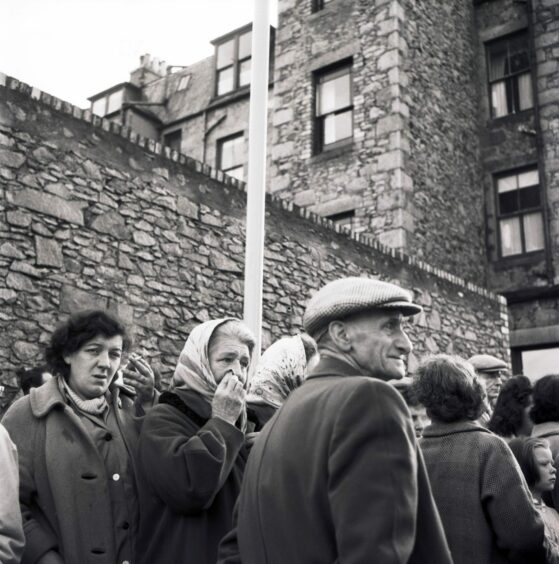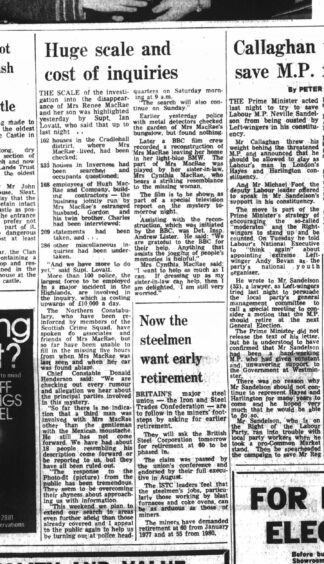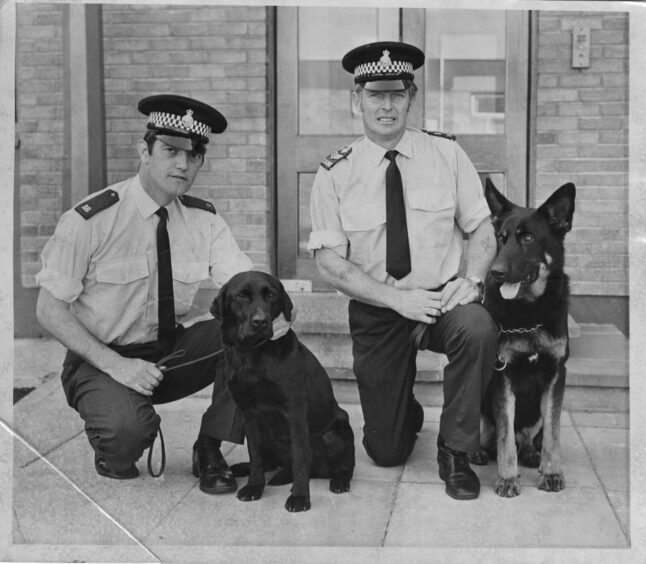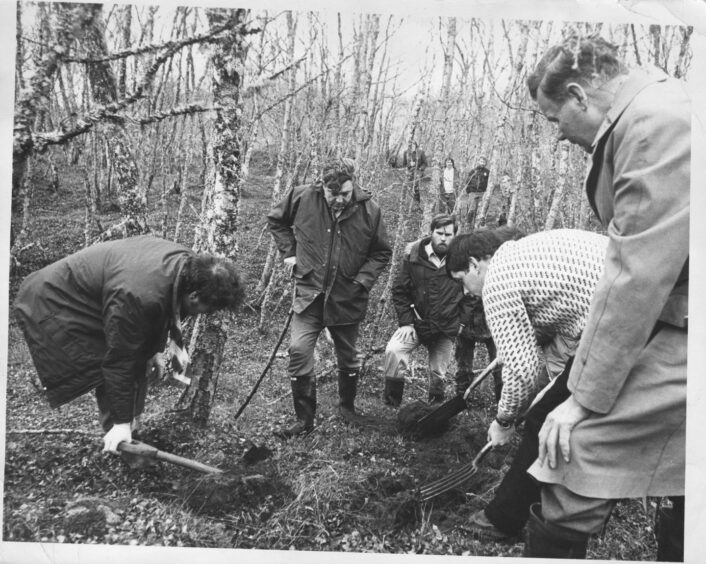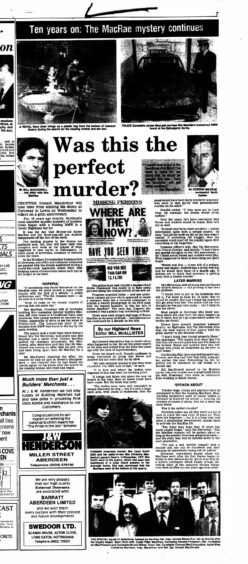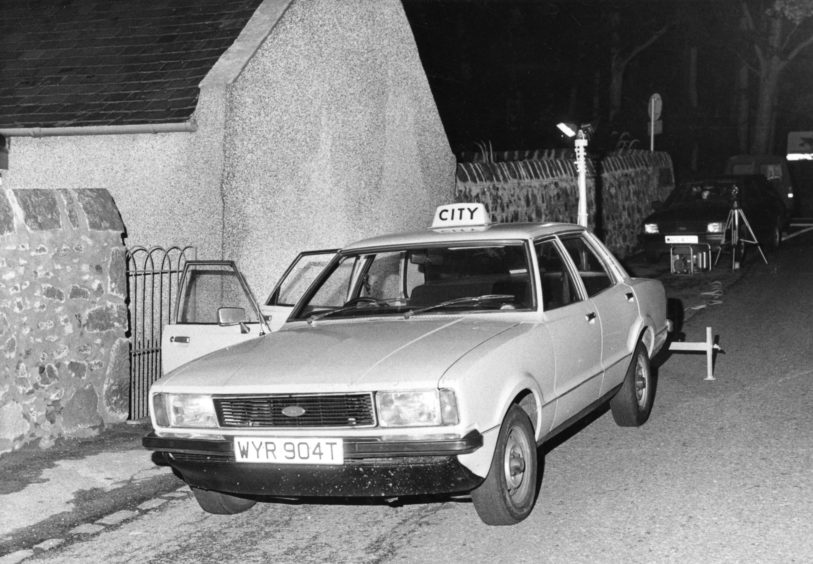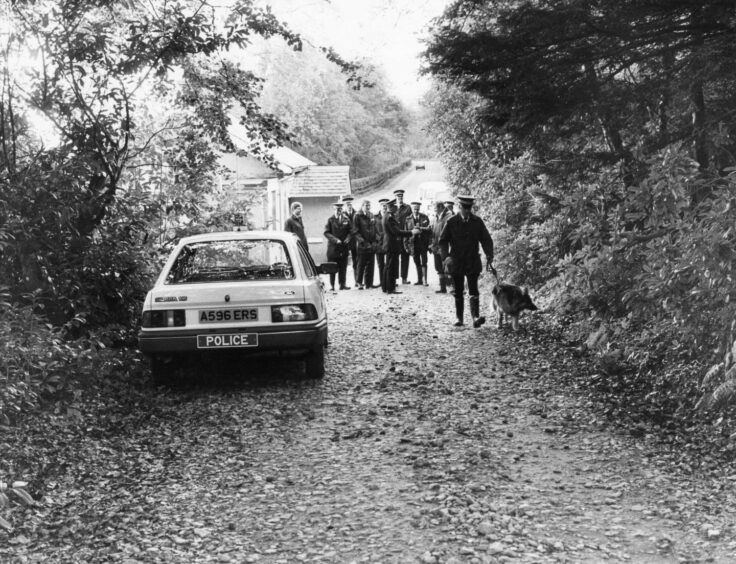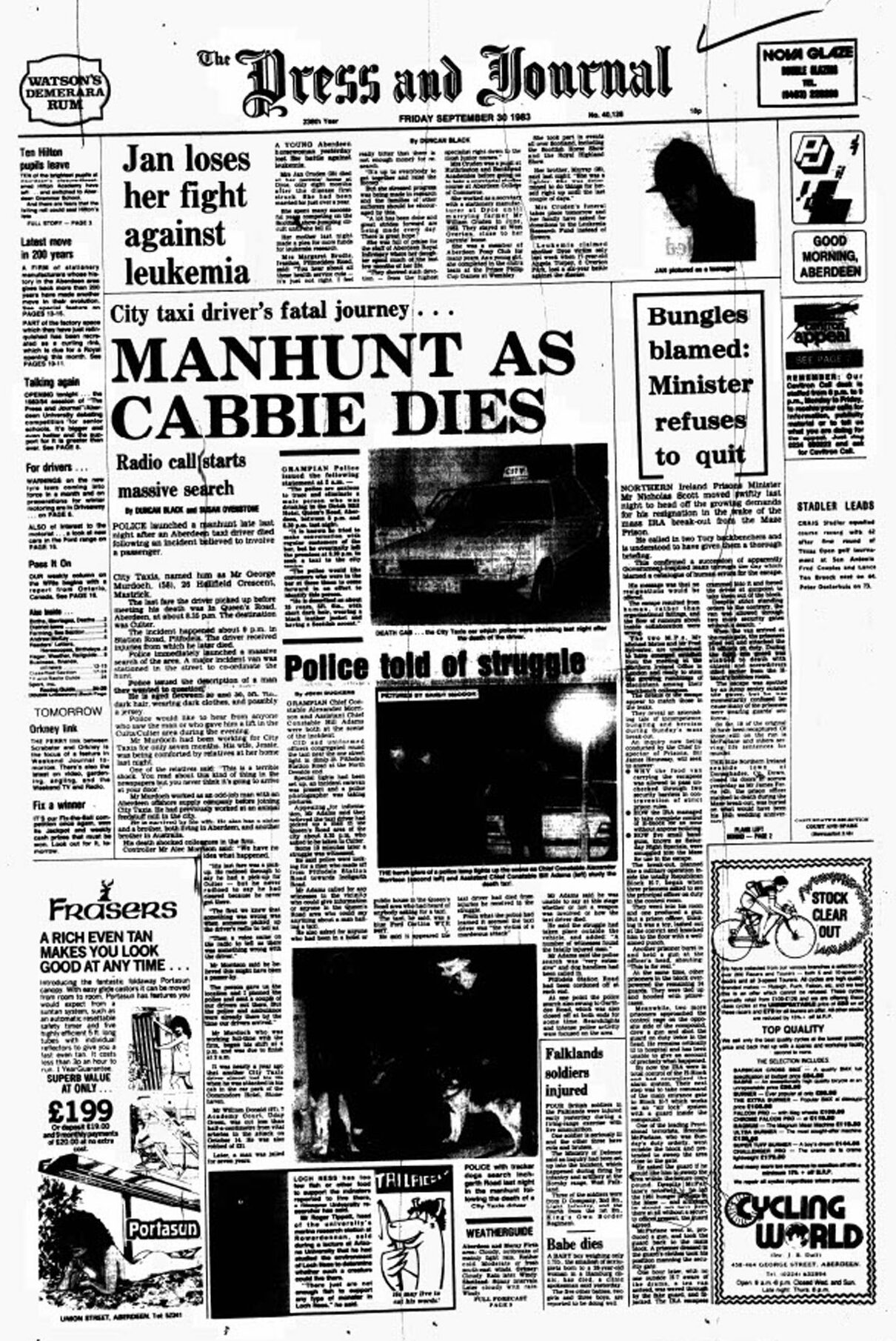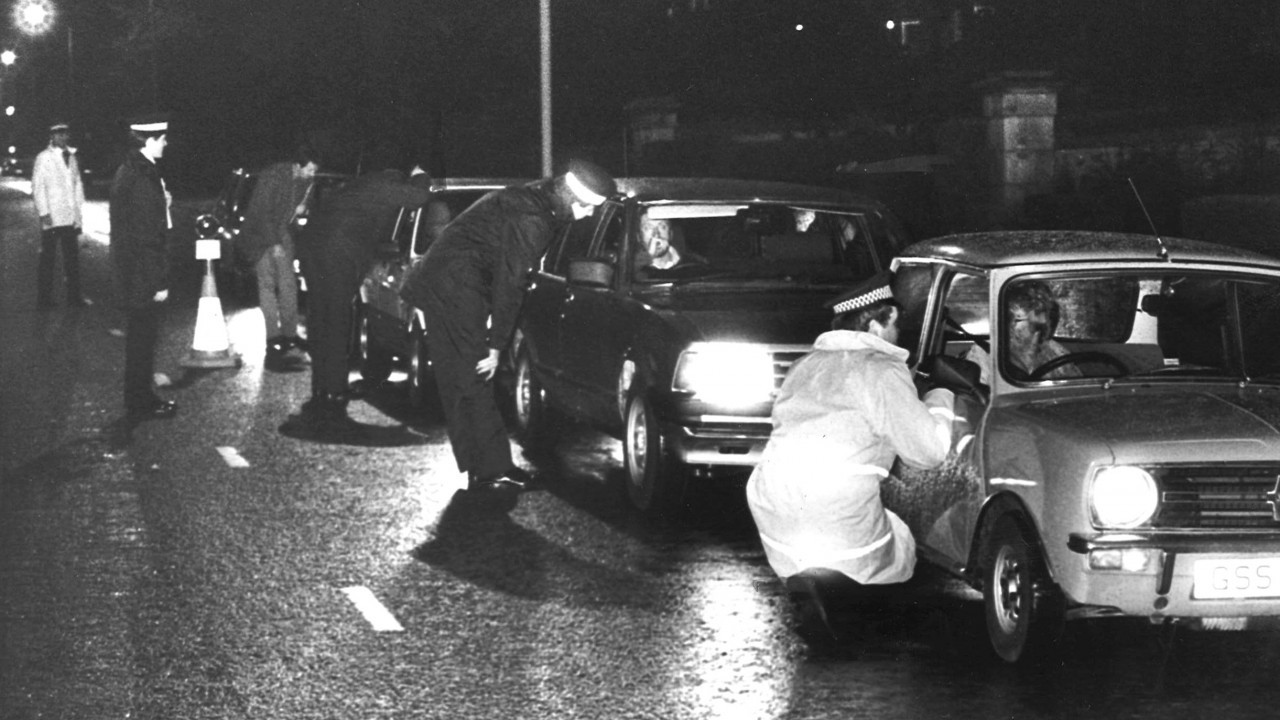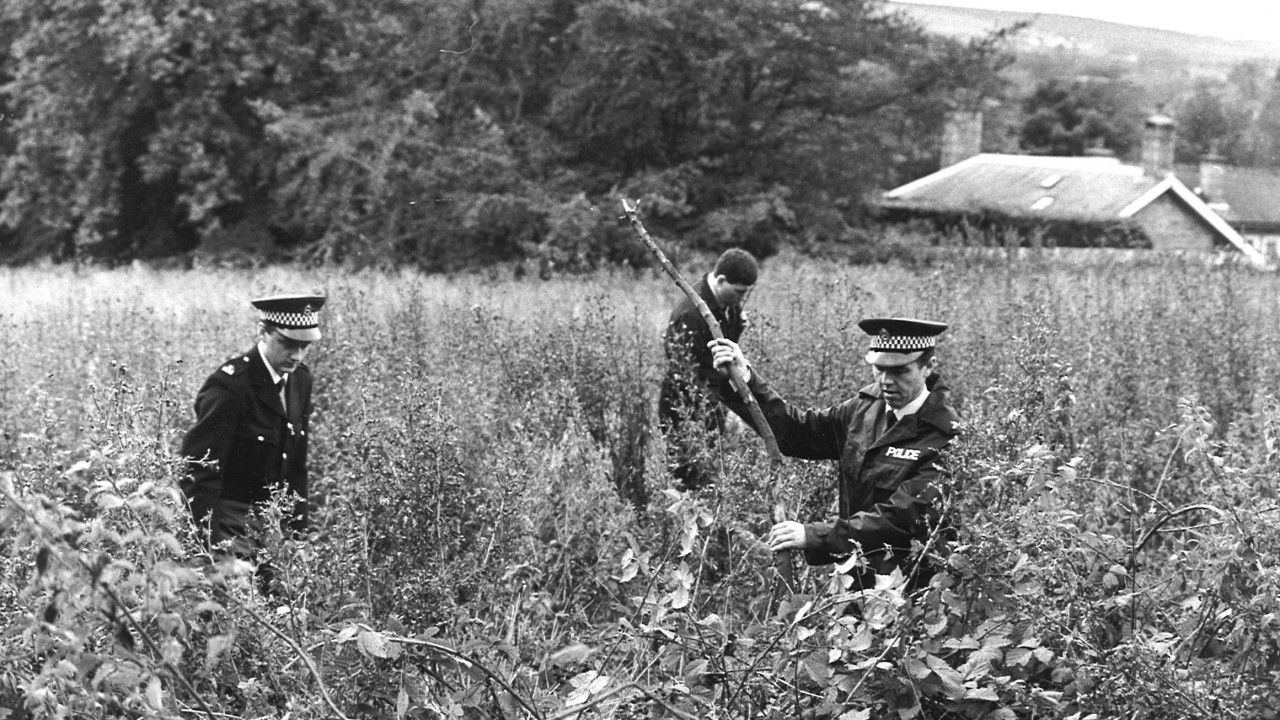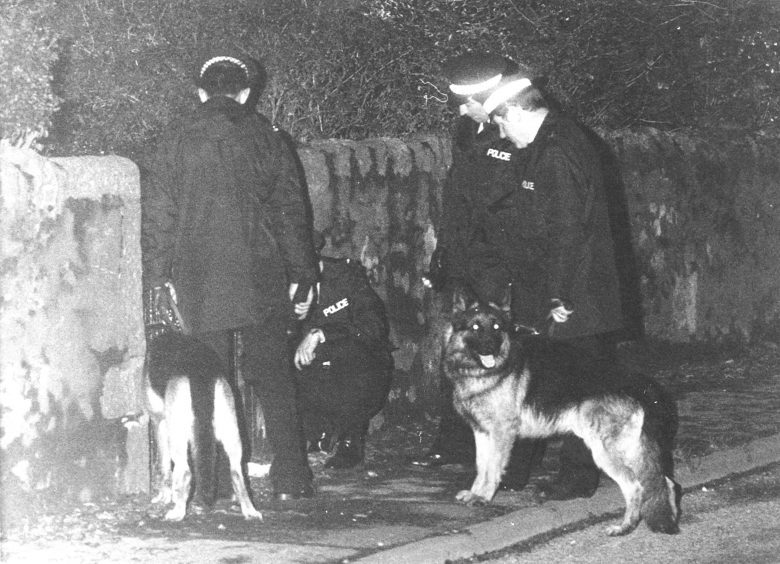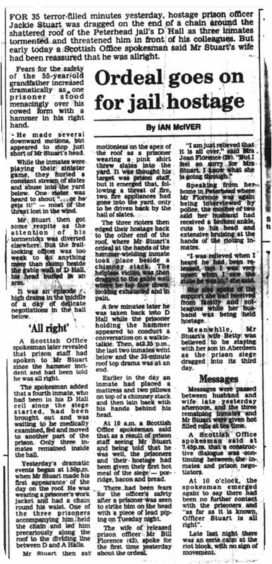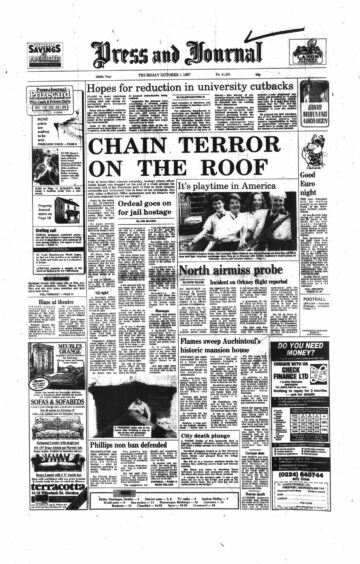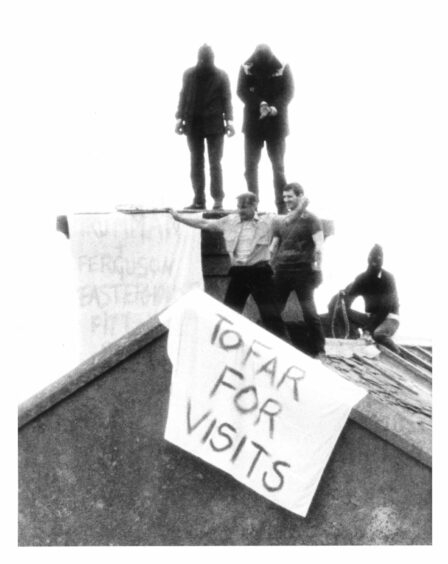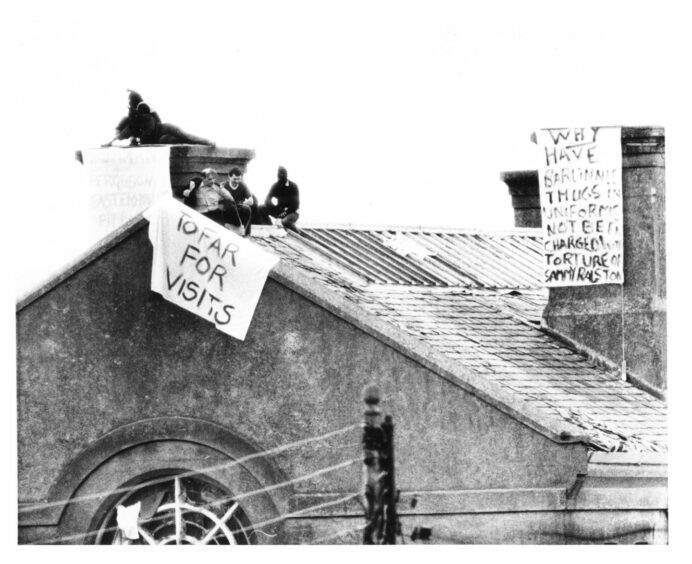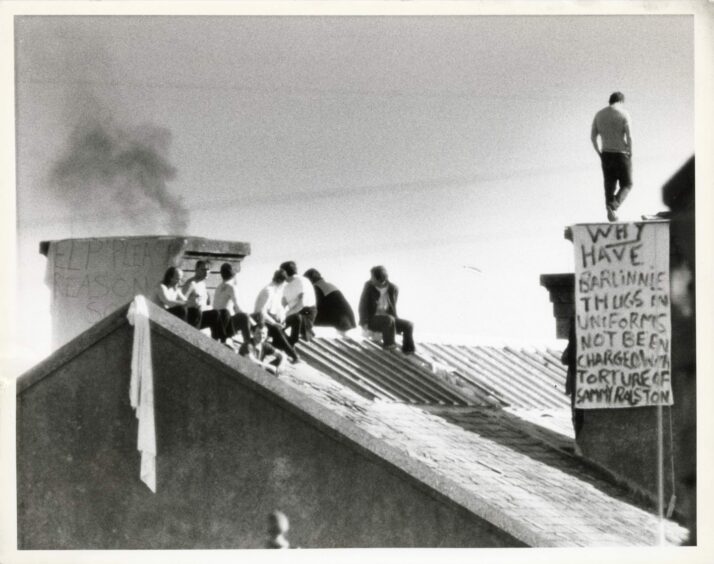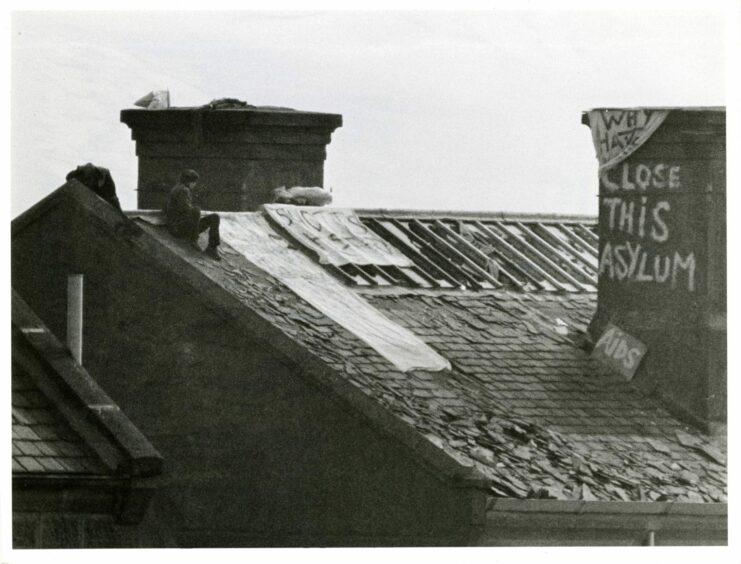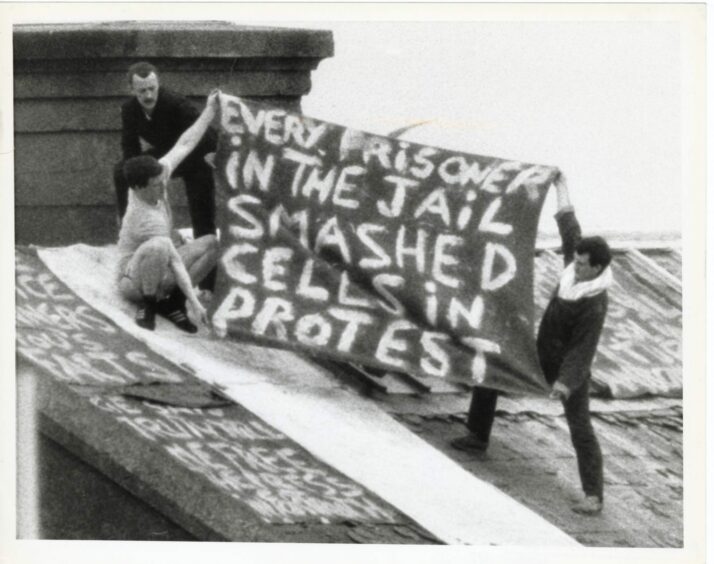From violent criminals being banished from Scotland and body parts washing up on beaches to unsolved murders and burning city buildings, The Press and Journal has reported on the crimes and investigations of the north and north-east for hundreds of years.
Each month, as we celebrate our 275th anniversary, we are bringing you a timeline of articles showcasing how The P&J has covered the stories of the region for more than 200 years.
This month, we focus on historic crimes and investigations including the brutal murder of Renee MacRae and her three-year-old son, the mystery surrounding the disappearance of Aberdeen teenager Betty Hadden, and there’s also an exclusive P&J documentary on Shaun Ritchie who vanished from The Broch.
You can also read about crimes dating back as far as 1750, when criminals were banished from Scotland or sent to the American Colonies after being found guilty of murder.
1750: Banished from Scotland and transportation to the colonies for child murder
In 1750 – two years after it was first published by James Chalmers – The Aberdeen’s Journal was already reporting on crimes in the north and north-east.
An article that year reported on Alexander Fraser Miller and his son, who were on trial in Inverness for breaking into the home of the tacksman and “beating and abusing him to the effusion of blood”.
Miller was found guilty and banished from Scotland.
On the same day, Ann Fraser – who was convicted of murdering a child – pled to be transported to the colonies. Her plea was granted.
At the time, thousands of Scots were often banished to the American colonies for criminal offences.
The P&J article also reported on Christian Guthrie who was tried by jury and found not guilty of child murder.
1831: Angry mob destroys Aberdeen’s Theatre of Anatomy
The Aberdeen Journal reported on the destruction of the Theatre of Anatomy on St Andrew’s Street in December 1831.
Opened just a few weeks prior to the article, which was printed on December 21, the theatre was established in order to provide medical students with better facilities for studying.
Residents in the city were not fans of the theatre – which was opened by surgeon Mr Moir – because they believed it would be used as a place to store dead bodies.
The P&J reported that two boys had been playing near the theatre when a dog was seen digging up human remains on the theatre’s grounds.
A crowd of thousands of angry people gathered and Mr Moir was assaulted but managed to escape the mob when he leapt from a window.
Residents found three bodies in the theatre. They carried the bodies out of the building then set the theatre on fire.
When a fire engine arrived, the angry crowd refused it access to the burning building.
1901: Aberdeen butcher stabbed to death in city bar
A butcher was stabbed to death and another seriously injured at a bar in the city.
On January 10 1901, The Aberdeen Journal reported on the arrest of James Harrow, who was accused of murdering William Tastard and seriously injuring David Ewing, describing it as a “frightful tragedy”.
All three men were butchers, and although Harrow initially escaped, he was caught by a police officer within an hour of the attack. He was found at his mother’s house in Park Street and the murder weapon – a knife – was under a bed.
Reporting on the scene, The Aberdeen Journal stated: “As to what led up to the frightful tragedy, the police say they are not, as yet, able to state definitely, but they say that the bar man and all the people who were in the shop at the time declare that there was no row before the knife was used, and that the men appeared to be perfectly sober.”
The article added: “William Tastard, the murdered man, belonged to a well-known family in Aberdeen. His mother, now well advanced in years, still keeps a confectioner’s shop in Shiprow, which has been famous for generations for its potted-head.”
1945: The Betty Hadden Mystery – the Aberdeen teen who was never found
Betty Hadden went missing from Aberdeen in December 1945, never to be seen again.
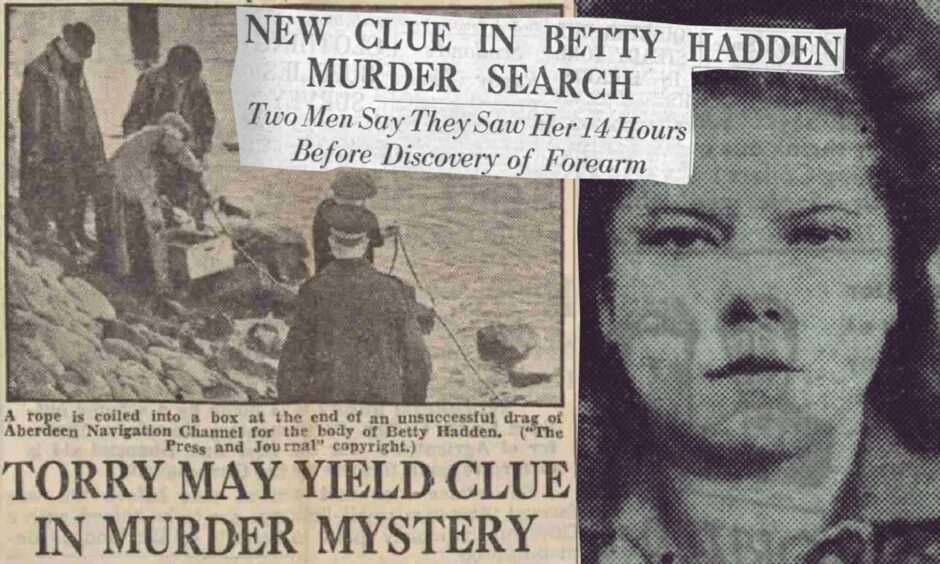
The Press and Journal reported on the missing 18-year-old, who is believed to have been murdered, after her arm was recovered from the foreshore of the Navigation Channel in Torry.
Elizabeth Ann Craig or Hadden – known as Betty – went missing after a night out in the Granite City.
Her last-known whereabouts on the eve of her disappearance were reported when a member of the public came forward after seeing her picture printed in The Press and Journal.
The paper published renewed appeals when it was believed two sailors could provide information on the last moments of Miss Hadden, and again when a leg was washed up on the Banff coast.
The case of Betty Hadden remains unsolved.
1963: The last man hanged in Scotland at Aberdeen prison
Henry Burnett was the last man to be hanged in Scotland after he was found guilty of murdering Tommy Guyan.
Burnett was executed on August 15 1963 at Craiginches Prison, Aberdeen. A petition launched in a bid to save his life received backing from both Burnett’s and the victim’s families.
A jury at the High Court in Aberdeen found Burnett guilty of murdering 27-year-old Tommy Guyan – a merchant seaman – at an address in the city.
On July 26 1963, a headline on the front page of The Press and Journal read: “Tragic Aberdeen families join in mercy plea.” A reporter spoke with both families.
Crowds gathered outside Craiginches Prison to protest the hanging in the days leading up to it, however, the execution went ahead.
1976: Highland police hunt for the killer of Renee Macrae and her young son
Renee MacRae vanished with her three-year-old son Andrew in 1976. Her car was found on fire on November 12 in a lay-by at Dalmagarry, near Inverness.
The P&J kept readers updated with developments in the case, stating: “More than 100 police, the largest force to be employed in a major incident in the Highlands, are involved in the inquiry which is costing upwards of £10,000 a day.”
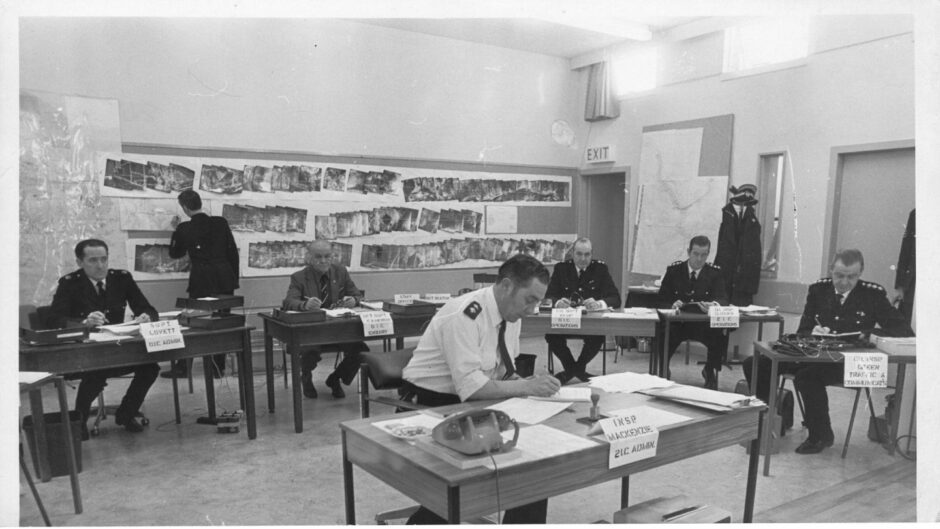
November 27 1976:
The Incident Room at Inverness Police HQ, the nerve centre of the hunt for Mrs Renee MacRae and her son, Andrew. In the picture are senior police officers involved in the search, with the mosaic of aerial photographs of the area being searched in the background.
Last year, Bill MacDowell was eventually jailed for life for the double murder of Mrs MacRae and her son.
MacDowell, aged 81, died serving his life sentence at Glenochil Prison last month.
1983: Murder of Aberdeen taxi driver George Murdoch
The case of George Murdoch‘s death remains unsolved. In September 1983, police launched a manhunt after Mr Murdoch was murdered on Station Road, Pitfodels.
At the time, police said they believed the 58-year-old was murdered by a passenger. A large-scale searched was launched with police appealing for anyone with information to come forward.
The Press and Journal’s front page article stated: “Police issued the description of a man they wanted to question.
“He is aged between 20 and 30, 5ft 7in, dark hair, wearing dark clothes, and possibly a jersey.”
The deadly weapon, a cheese wire, was recovered nearby. Detectives believe that theft was the motive behind Mr Murdoch’s murder.
Four decades later, police have still not solved the mystery surrounding Mr Murdoch’s death.
1987: Chain terror on the roof at Peterhead Prison as inmates riot
A prison officer was held hostage on the roof of Peterhead Prison as inmates rioted in October 1987.
The news made the front page of The Press and Journal.
Prison officer Jackie Stuart had been dragged on to the roof on a chain by rioters.
The paper reported that 11 months prior there had been an incident in which prisoners held warden John Crossan captive for 91 hours.
The Press and Journal report read: “For 35 terror-filled minutes yesterday, hostage prison officer Jackie Stuart was dragged on the end of a chain around the shattered roof of the Peterhead jail’s D Hall as three inmates tormented and threatened him in front of his colleagues.
“But early today a Scottish Office spokesman said Mr Stuart’s wife had been reassured that he was all right.
“Fears for the safety of the 55-year-old grandfather dramatically increased as one prisoner stood menacingly over his cowed form with a hammer in his right hand.
“He made several downward motions, but appeared to stop just short of Mr Stuart’s head.”
1997: Cressy, one of Scotland’s biggest heroin dealers from Aberdeen, jailed
On May 29 1997, William Cressy was jailed for 11 years at the High Court in Aberdeen.
The Press and Journal reported on its front page that Cressy was labelled one of Scotland’s biggest heroin dealers by Grampian Police after he used his haulage firm as a front to import more than £1.5 million of the drug into Aberdeen.
An article by P&J reporter Ken Banks stated: “The boss of the collapsed Dyce Haulage was snared after lengthy joint surveillance by Grampian Police and the Scottish Crime Squad under Operation Camisole led to his arrest.”
2021: P&J documentary reveals new details surrounding Shaun Ritchie’s disappearance from The Broch
In 2014, Shaun Ritchie was travelling in a van to a remote farmhouse a few miles from Fraserburgh. He was never seen again.
On the eighth anniversary of the 20-year-old’s disappearance, The Press and Journal released an exclusive documentary, Missing from The Broch: The disappearance of Shaun Ritchie.
The documentary took a fresh look at Shaun’s case – which sparked the biggest manhunt in Police Scotland’s history at the time.
2022: Our documentary investigates North Sea diver behind £100m Highland cocaine plot
To this day, North Sea diver-turned-drugs baron Julian Chisholm remains one of the world’s most-wanted men after a massive Ullapool drugs bust.
Chisholm escaped from his shackles in the early 1990s, sparking outrage among Spanish and Scottish officials.
Read more from our 275th year anniversary series
